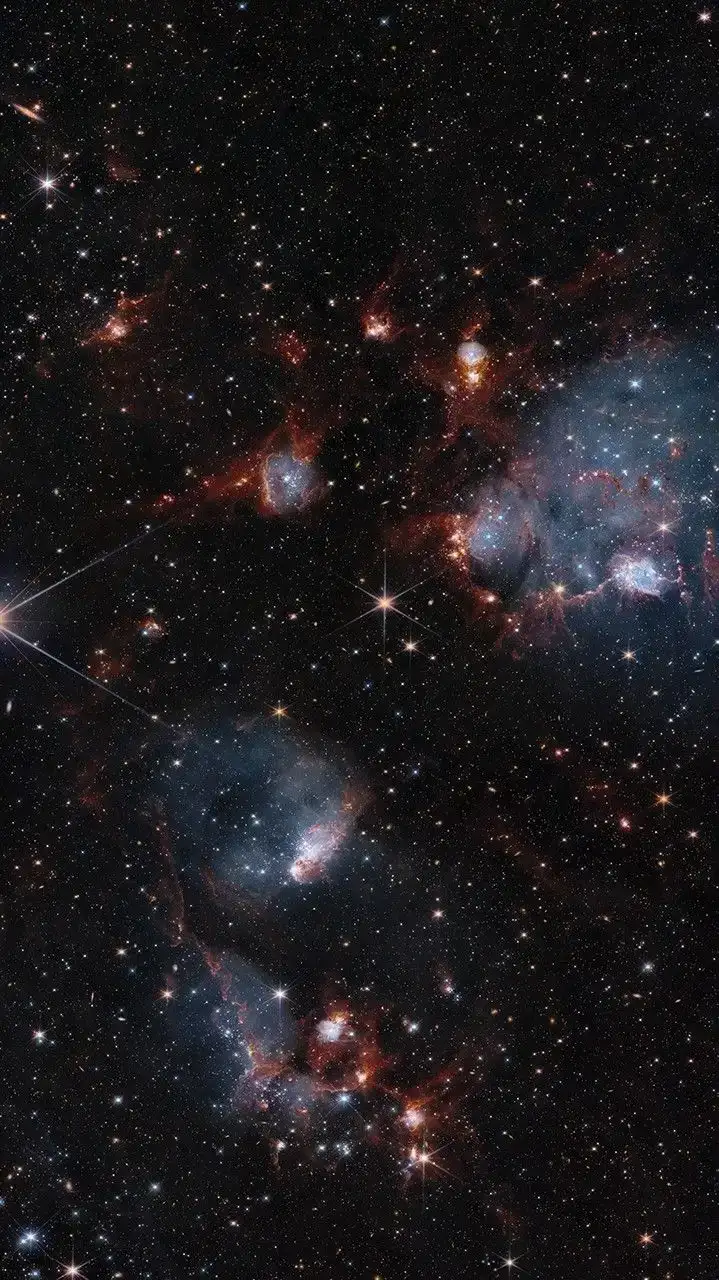It’s always better when we’re together 💕
Hubble ✨ + Webb 🌌 = A Cosmic Duet
The open star clusters **NGC 460** and **NGC 456** lie in the Small Magellanic Cloud — a nearby dwarf galaxy orbiting our own. These clusters are stellar nurseries where stars are not only being born, but also shaping the clouds that formed them.
This new composite image blends:
What Makes These Clusters Special:
• They are “open” clusters — loose groups of stars born together from the same cloud
• Their stars range from newborn, hot blue giants to older, cooler stars
• The interplay of gas, wind, and gravity keeps triggering *new* star formation
• They show what star birth looked like *billions of years ago* when the universe had fewer heavy elements
A Living Star-Birth Cycle 💫
Stars are forming → producing powerful winds → sculpting the nebula → causing more collapses → forming more stars.
It’s a cosmic chain reaction — a heartbeat of creation still echoing across the galaxy.
Why This Matters:
Because the Small Magellanic Cloud has fewer heavy elements than our Milky Way, it acts like a “time machine,” letting astronomers study how early galaxies formed stars when the universe was young.
Conclusion:
In this stunning blend of Hubble and Webb data, we see both the **spark** (newborn stars) and the **sculptor** (the clouds they shape). It’s a reminder that beauty in the universe is rarely created alone — it’s made together. 💞
📖 Source: NASA / ESA / CSA
📸 Image Processing: NASA / STScI
#jameswebb #hubble #starclusters #ngc460 #ngc456 #smallmagellaniccloud #astronomy #cosmicnursery #spaceisbeautiful

 News Feed
News Feed  Albums
Albums  Popular Posts
Popular Posts  Memories
Memories  Pokes
Pokes  Blog
Blog  Market
Market  Directory
Directory  Events
Events  Games
Games  Jobs
Jobs  Offers
Offers  Find friends
Find friends  Common Things
Common Things  Fundings
Fundings 



